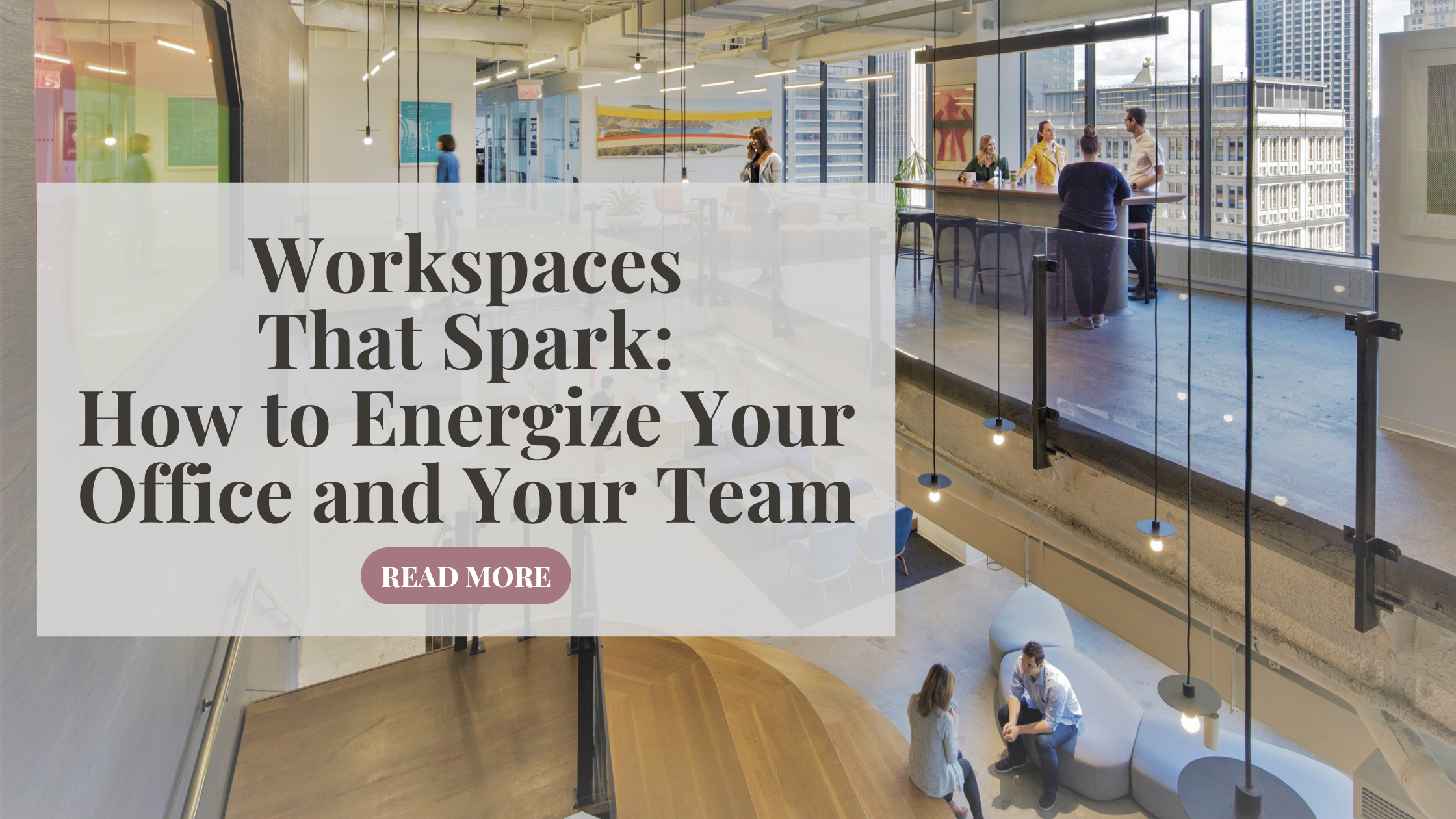Workspaces That Spark: How to Energize Your Office and Your Team
Workspaces should do more than hold desks and meeting tables—they should energize the people inside them. An office that reflects your team’s rhythm and creativity boosts morale, drives momentum, and strengthens culture. It’s not about flashy perks; it’s about thoughtful, intentional design that supports real, everyday energy. Here’s how to design a space that fuels creativity and connection:
1. Vibrant Color Strategy
Use color to bring the room to life. Bold accent walls, colorful furniture, or saturated artwork can create visual excitement and help set the tone for brainstorming, collaboration, or high-focus work.
2. Movement-Oriented Layouts
Encourage healthy movement throughout the day with a layout that includes open lounges, informal huddle zones, and standing meeting tables. When people aren’t locked to one spot, creativity tends to flow more freely.
3. Creative Brand Integration
Subtle nods to company culture—like mission statements on the wall, art that reflects your values, or accessories that mirrors your brand’s tone—help employees feel connected to their environment. This connection enhances pride, purpose, and performance.
4. Lighting That Lifts the Mood
Natural light is always the goal, but layered lighting design is key. Brighter, cooler tones in active zones and warmer ambient light in recharge areas can help regulate energy and support both focus and rest.
5. Mood-Lifting Materials
Incorporate textures that feel good and spark visual interest—like felt, polished wood, smooth concrete, or soft upholstery. Adding variety in finishes creates a sensory-rich experience that energizes rather than exhausts.
A vibrant office doesn’t have to be loud or chaotic—it should simply reflect the energy of the people who work there. When your team feels supported by their surroundings, productivity becomes more natural, and collaboration more seamless. What’s one change you’d love to see in your workplace environment? Share your thoughts—we’d love to hear them.

